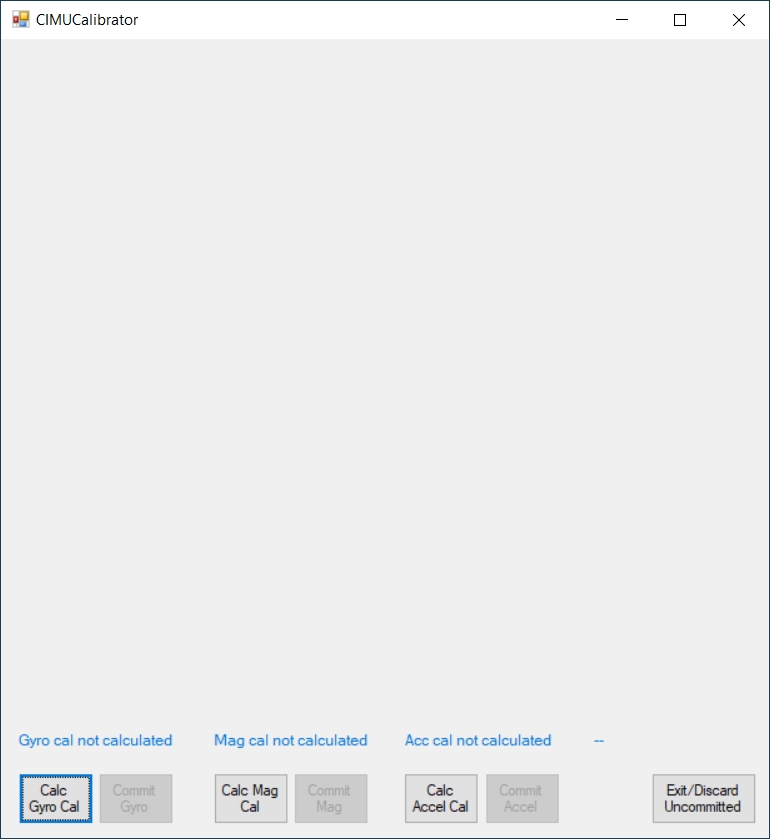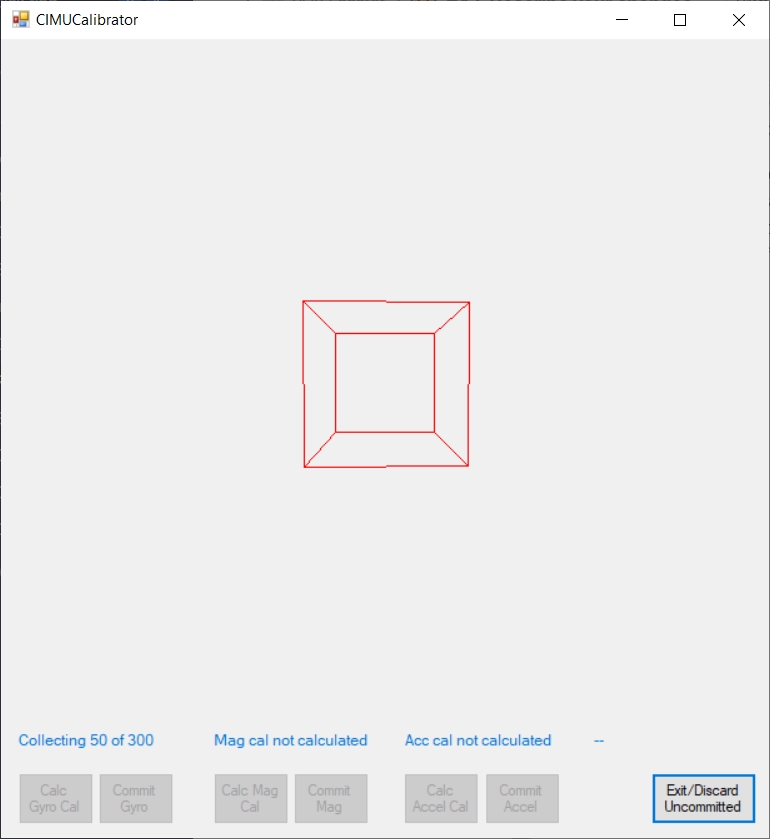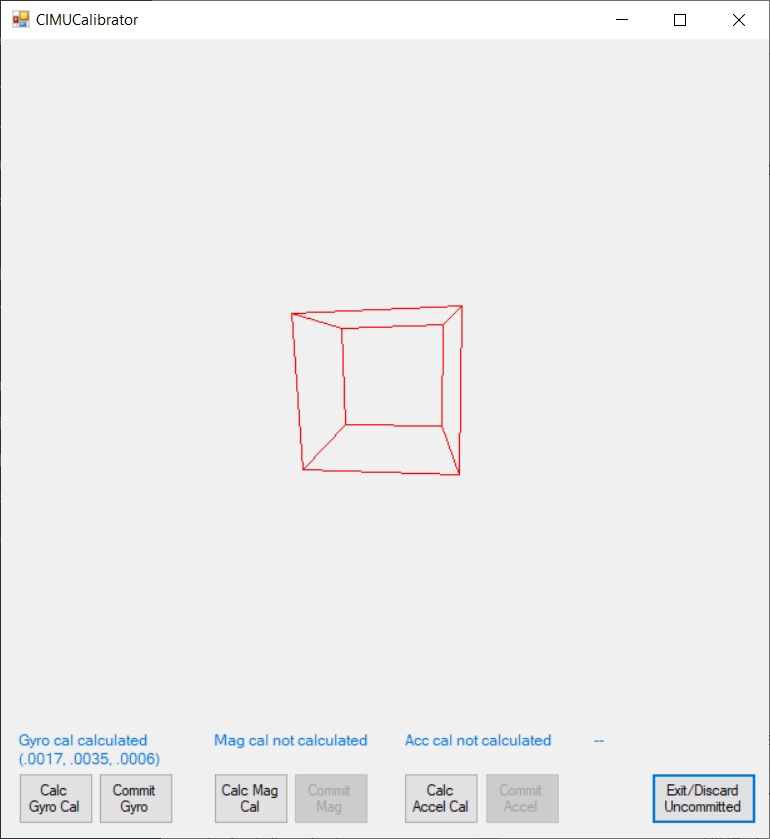CIMU Gyro Calibration
The gyros are subject to slight aging effects, and to temperature effects. Generally, you really only need to calibrate these every three to six months.
Since inertial space is uniform everywhere (at least within the measurement capability of the sensors), you can run the calibration anywhere there is a solid, stable surface. Generally a boat will not be stable enough unless the wind is dead calm. To begin, set the device in a completely stable position (on its nose usually works well) click the "Gyro Accel Cal" button as seen in the figure below.

The system will collect a few hundred points. You don't need to do anything else during data collection.

After the data is collected and the calibration parameters are calculated, the cube remains in the display. Let the device sit for a few minutes. The cube should move only slightly over that time, and mostly in a slight back-and-forth manner.

If you like what you have collected, you can click the "Commit Gyro" button and the parameters will be sent to the device to overwrite the previous parameters. If you're finished, click the "Exit" button.